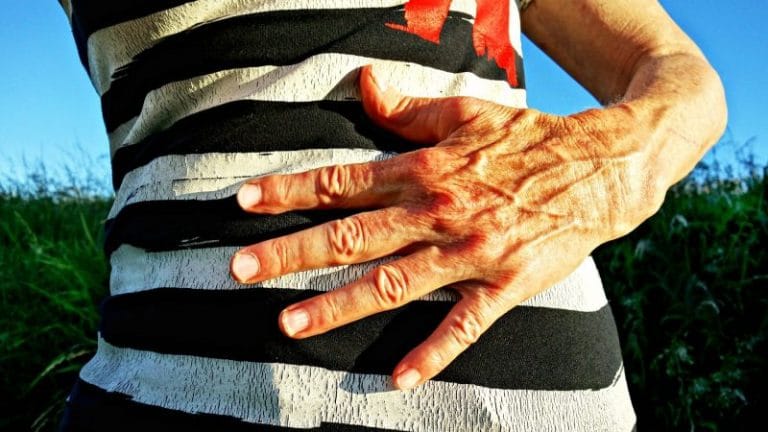33 Most Alarming Mental Health Statistics & Facts for 2024

Mental health stands for our emotional, psychological, and social well-being and its effect on how we feel, act, and think about the world around us. It also impacts people’s everyday activities, physical health, and relationships. Following that, mental health, a frequently overlooked topic, should be addressed just like physical health.
Sadly, mental health statistics gathered over the last couple of years are alarming. That being said, diverse treatment options are available to those in need, making normal functioning and full recovery more than possible!
Mental Health Statistics for 2024
Generalized Anxiety Statistics
Generalized anxiety disorder is marked by excessive worry and bursts of anxiety about different events or activities in the future. People with the condition find it extremely difficult to control their feelings of worry.
All in all, with it being the most common mental illness, it’s essential to learn all about anxiety’s signs, symptoms, and treatment.
1. Approximately 3.1% of US adults have a generalized anxiety disorder in any given year.
(ADAA)
According to recent mental health statistics, generalized anxiety disorder is one of the most frequently occurring disorders in the US, affecting around 6.8 million adults in any given year.
The highest risk for this condition is found between childhood and middle age. Even though the exact reason behind the occurrence of this condition might be left uncovered, it is known that several factors like family background, life experiences, and biological factors play a part.
2. In 2017, around 32.3% of adults with generalized anxiety disorder were highly impaired.
(NIMH)
Generally speaking, impairment was commonly found in adults with generalized anxiety disorder. For instance, stats on mental illness confirm that 44.6% had a moderate and 23.1% had a mild impairment. The impairment level was determined based on the Sheehan Disability Scale.
3. Around 2.2% of adolescents have some form of generalized anxiety disorder.
(NIMH) (Stanford Children’s Health)
Recent adolescent mental health statistics have emphasized that 0.9% of adolescents displayed a severe level of impairment due to the condition. Furthermore, children whose parents have a generalized anxiety disorder (GAD) and those who seem more restrained as toddlers are more likely to have it.
4. There is a 57% chance of recovery from GAD with a psychotherapy-based approach.
(Psychology Today)
Mental health problems like GAD are disabling and distressing. According to Psychology Today, there’s a good chance of recovering from the disorder through psychotherapy. Nevertheless, mental disorders statistics uncover that about 60% of GAD patients still exhibit symptoms 12 years later, regardless of whether they have had treatments during that period.
5. Women have double the chances of developing a generalized anxiety disorder.
(ADAA) (Texas Health Resources)
These are the mental health statistics for the US compiled by the National Institute of Mental Health. More precisely, 3.4% of women experience GAD, compared to 1.9% of men. However, experts aren’t sure why this occurs at different rates and causes different responses across the sexes.
Depression Statistics
Depression is known for affecting people of all demographics. And it’s also one of the most frequent mental health disorders globally, according to statistics on depression from 2021.
The symptoms include loss of interest in once pleasurable activities, mood swings, sleep issues, and a drastic change in appetite. Read the following section to stay up-to-date.
[visualizer id=”99307″ lazy]
6. 7.8% of US adults experience a major depressive episode, as per statistics on mental illnesses.
(WebMD) (Nami)
It translates to around 19.4 million people.
Major or clinical depression is characterized by a depressed mood for most of the day, especially in the morning, and a loss of interest in everyday activities. The symptoms are usually present every day for at least two weeks.
7. Around 5% of US adults experience seasonal depression every year, as per mental illness statistics.
(Psychiatry)
Seasonal affective disorder (SAD) is a depressive disorder whose pattern follows seasonal changes. Mental health facts note that the symptoms usually appear in the fall and winter when there isn’t much sunlight. Generally, the symptoms improve when the summer comes around. Be that as it may, in some rare cases, people experience SAD in the summer, too. It usually lasts about 40% of the year, and it is more common for women than men.
8. Postpartum depression occurs in one in nine women.
(WebMD)
Women are frequently exposed to stress, loneliness, and exhaustion after giving birth—something experts refer to as “baby blues.” In more severe cases, this state leads to postpartum depression.
Based on statistics, not only do 70% of women experience this “baby blues,” but fathers also go through it. If you’re wondering how to get mental help, turning to online therapy could be a good place to start.
9. Worldwide, one person dies by suicide every 40 seconds.
(WHO)
Mental health trends reveal that individuals who suffer from constant depressive episodes may show suicidal tendencies if the disorder is left untreated. Suicide is the second leading cause of death in young people, and the suicide number is higher in high-income countries.
10. Half of the economic costs linked to a major depressive disorder are due to absenteeism and presenteeism.
(Workplace Mental Health)
Mental illness facts suggest that depression not only takes a toll on the individual and their family, but it also affects the entire society.
To explain further, absenteeism refers to missed days from work, and presenteeism stands for reduced productivity at work. What’s more, 45%–47% of economic costs are attributed to direct medical tests.
Mental Health Facts and Stats About Specific Phobias
A phobia is an irrational yet persistent and extremely overwhelming fear that makes a person avoid an object or a situation. For example, some individuals may be afraid of certain things, such as spiders or tall buildings, whereas others feel overwhelmed in social gatherings. Make sure to read on as we go into more detail.
11. Statistics on mental health imply that social phobias affect 15 million of the US adult population.
(Psycom)
Based on the US National Comorbidity Survey, social phobia (also known as social anxiety) is the third most common mental disorder in the US, with a 12-month prevalence rate of 6.8%. Additionally, social anxiety is more common in women than men.
12. Mental illness treatment statistics affirm that 50% of individuals with social phobia seek treatment.
(NCBI)
Those people seek treatment after 15–20 years of having symptoms. These delays might be because people think social phobia is a part of their personality that one can’t change. Other factors include a lack of recognition by healthcare professionals, a general lack of information, and limited availability of services.
13. Nearly 80% of individuals with some form of phobia find relief in medicines and therapy.
(Harvard Medical School)
It’s highly advised that you make a doctor appointment if you’re troubled by anxieties and fears. Astoundingly, mental health care statistics show that cognitive-behavioral therapy helps about 75% of individuals with specific phobias overcome their fear.
14. Agoraphobia without panic disorder affects around 0.9% of the US adult population.
(Verywell Mind)
Facts about mental health remark that agoraphobia, the fear of situations that may be hard to escape, is associated with panic disorder. That being said, it’s been estimated that agoraphobia without panic disorder affects around 1.8 million people. More than 40% of agoraphobia patients have a severe case, and less than half of the people with this condition receive treatment.
15. An estimated 21.9% of adults with a phobia are seriously impaired because of it.
(NIMH)
Statistics about mental health disclose that 48.1% of the subjects experienced mild impairment, and 90% had moderate impairment. When it comes to specific phobias in adolescents, females show higher specific phobia prevalence (22.1%) than males (16.7%).
Mental Disorder Stats on Obsessive-Compulsive Disorder
Obsessive-compulsive disorder (commonly abbreviated as OCD) is defined as having frequent thoughts and behaviors that a person might feel inclined to repeat over and over. The thoughts turn into obsessions, and the behaviors are compulsions. Don’t miss out on this section and learn more on the matter.
16. Around 1.2% of adults in the US have obsessive-compulsive disorder.
(ADAA)
When it comes to mental health in America, statistics point out that over 5 million US adults will face an OCD diagnosis at some point in their lives. What’s more, the disorder currently affects around 1 in 40 adults and 1 in 100 children in the US.
17. Rates of obsessive-compulsive disorder are higher among women.
(PubMed)
Women are approximately 1.6 times more likely to have obsessive-compulsive disorder, with lifetime prevalence rates of around 1.5%. In comparison, based on male mental health statistics from 2020, the lifetime prevalence rates of OCD in men are 1%. What’s also important is that younger adults have higher chances of having OCD than older ones.
18. Around 10% of individuals with OCD completely recover after receiving treatment.
(Single Care)
Generally speaking, patients can manage OCD effectively with psychotherapy and medication. As many as 50% of people with OCD experience improvements with the proper treatment.
That said, an accurate diagnosis is hard to receive. In fact, it may take nine years on average to get a proper diagnosis and another 17 years to receive care, as per mental health care statistics.
19. Up to 90% of people with obsessive-compulsive disorder suffer from another type of mental disorder.
(The Recovery Village)
Anxiety is one of the conditions that might co-occur with OCD, with a 75.8% comorbidity rate. There’s also ADHD (18.8% comorbidity rate), depression (40.7%), and bipolar disorder (23.4%).
20. There is a 40%–60% success rate of therapy with selective serotonin reuptake inhibitors (SSRI).
(Single Care)
Mental health facts report that SSRI are commonly prescribed to OCD patients, and it’s essential to take them every day. It can take 10 to 12 weeks to notice any changes. Luckily, patients with obsessive-compulsive disorder have shown a positive response to drug therapy. That said, patients who stop taking SSRIs are likely to relapse.
Mental Health Statistics on Eating Disorder
An eating disorder (abbreviated as ED) is characterized by body dysmorphia, abnormal eating habits, and severe distress about one’s body weight. Anorexia nervosa, bulimia nervosa, and binge eating disorder are some of the most common eating disorders that affect people of all backgrounds. Let’s go deeper and discover more.
21. Between 0.9% and 2% of females and between 0.1% and 0.3% of males will develop anorexia.
(NEDA)
Besides, subthreshold anorexia appears in 1.1%–3% of teen girls, based on the prevalence of mental illness statistics. Moreover, young people with anorexia aged between 15 and 24 have a ten times higher risk of dying than their peers without anorexia.
As for the overall increase in mental illness, statistics find that the incidence of anorexia has been on the rise over the last five decades in females aged 15–24 while remaining stable in other age groups and males.
22. 1.2% of people aged 15 and older meet the criteria for anorexia nervosa in their lifetime.
(Center for Discovery)
Stats also uncover that this eating disorder is the rarest among Black adolescents and adults. What’s more, mental health statistics disclose that Black people are less likely to get diagnosed with AN in the first place.
23. 25% of people with eating disorders are male.
(AAC)
Men are just as likely to develop anorexia. However, facts about mental health discover that men with anorexia show different symptoms than women and might need gender-specific treatments to understand and manage their anorexia concerns.
24. Around 25.5% of female college athletes displayed symptoms of a subclinical eating disorder.
(The Sport Journal)
Eating disorders are common among athletes, especially young women. It is due to the increased attention they give to their physical appearance. The number of athletes who meet diagnostic criteria for clinical or subclinical eating disorder varies considerably from 1.1% to 49.2%, as per college student mental health statistics.
25. Up to 28.8 million Americans will have an eating disorder in their lives.
(ANAD)
Based on eating disorder statistics by the National Association of Anorexia Nervosa and Associated Disorders, the percent of people with this mental illness is quite high. In other words, the condition’s prevalence stands at 9% of the US population.
Children’s Mental Health Stats
Specific mental health issues such as anxiety, attention-deficit hyperactivity disorder, and behavior disorder impact the ways children learn in school, how they control their emotions, as well as affect their quality of life. The following section covers more, so keep reading.
[visualizer id=”99305″ lazy]
26. In the US, 9.4% of children have been diagnosed with ADHD so far.
(CDC)
That translates to 6.1 million children. That includes 388,000 children between the age of 2 and 5, 2.4 million children aged 6–11, and 3.3 million children aged 12–17, as per teen mental health statistics. In addition, boys are more likely (12.9%) to be diagnosed with ADHD than girls (5.6%).
27. 59.3% of children aged 3–17 who have anxiety received treatment.
(Maryville University)
As many as 53.5% of children (five in ten) with a behavior disorder and 78.1% of children (eight in ten) with depression received some form of therapy. These numbers may be even higher as people from marginalized communities may not have access to resources that provide relief.
28. Almost 5% of US children have a mental disorder, as per mental illness statistics for the USA from 2020.
(WebMD)
And that refers to mental illnesses which considerably interfere with one’s life. What’s more, approximately 20% of children in the US will be diagnosed with a mental illness in any given year.
Generally speaking, the exact causes of mental disorders aren’t known, but teenage mental health facts suggest that they may be linked to heredity, environmental stress, and psychological trauma, among other things.
29. Members of the LGBTQ community aged 14–19 are more likely to develop a mental disorder.
(Mental Health Foundation) (MHA)
Based on LGBT mental health statistics, those identifying as LGBTQ have a 34.9% chance of developing a mental disorder compared to heterosexuals with a 13.2% chance. Stats also uncover that transgender and bisexual people have the highest rates of mental health concerns compared to other groups in the LGBTQ community.
30. 14.9% of children with parents who have a mental disorder will develop a disorder themselves by four.
(Mental Health Foundation)
It goes without saying that children’s family and surroundings influence their mental health. Namely, some of the factors that increase the likelihood of the child developing a mental health disorder include having parents with mental illnesses and living with a family with the lowest levels of functioning.
Mental Health Statistics About COVID
Surely, isolation, loss of income, fear, and distress due to COVID-19 lead to developing mental health illnesses or worsen the existing ones. Coronavirus itself may also cause neurological and mental complications, like a stroke, delirium or agitation. Let’s learn more from this section.
31. 18% of people with COVID-19 are later diagnosed with a mental health disorder.
(KFF)
According to mental illness facts, the most commonly found mental illnesses are anxiety or mood disorders in these people. What’s also important is that older people are more vulnerable to severe forms of the virus and have experienced increased levels of depression and anxiety since the start of the pandemic.
32. Drug overdose deaths were pronounced in March–May 2020.
(KFF)
In June 2020, 11% of adults reported thoughts of suicide in the last month. In the same month in 2020, 13% of adults reported new or increased substance use related to coronavirus stress, according to mental health statistics from 2020.
33. Non-Hispanic Black adults (48%) are likely to report anxiety or depression symptoms due to the pandemic.
(KFF)
Latino mental health statistics uncover that Hispano or Latino adults are almost as likely (46%) to report the symptoms. The lowest likelihood is determined for Non-Hispanic White adults (41%).
Youth mental health statistics find that, as of December 2020, 56% of young adults aged 18–24 reported anxiety and depression symptoms. What’s more, more young adults start or increase substance use compared to all adults.
Conclusion
Stats in this article cover some of the most common mental health disorders, including anxiety, depression, eating disorders, obsessive-compulsive disorder, and specific phobias. Hopefully, these mental health statistics help break the stigma surrounding mental health in all its complexity.
Remember, if you or your loved one is experiencing mental health issues, your first step should be contacting a mental health provider.
FAQs
How many people have a mental illness?
In the US, mental illnesses are common. In fact, almost one in five American adults lives with a mental illness, which translates to 51.5 million people in 2019.
How to get mental help?
The first step is noticing something isn’t right with your or someone else’s mental health. Then, the second step is getting help from a psychiatrist or another mental health provider like a psychologist or a clinical social worker.
However, in case of emergency, when someone is suicidal or in a crisis, the best thing to do is call 911, which can also be done via medical alert systems.
What country has the highest rate of mental illness?
According to mental health statistics by country, China records the highest rates of mental illness. Next to it are India, the US, Brazil, and Russia. Furthermore, according to mental illness statistics worldwide from 2020, countries affected by conflict, violence, or fragility marked a 22.1% increase in the number of mentally ill people. That is one in five people.
Note that the statistics above come from the WHO research. Namely, the organization examined the countries with the greatest burden of disease for mental and behavioral disorders. This research assessed most years of life lost due to disability or death, adjusted for population size.
How many mental illnesses are there?
There are over 200 classified forms of mental illness. Some of the most common ones are depression, anxiety disorders, bipolar disorder, and schizophrenia.
Furthermore, some of the symptoms are changes in personality, personal habits, mood, and social interactions. As for schizophrenia, patients might seem as if they’ve lost touch with reality. That could lead to considerable distress for the patients, their families, and their friends.
Who can diagnose mental illness?
Treatment options vary by the type of mental illness, its severity, and the patient’s needs. It’s possible to end up receiving a combination of treatments that will target most or all issues. A team of healthcare providers will likely work together to ensure the safest treatment. It might include a nurse practitioner, pharmacist, family or primary care doctor, physician assistant, psychiatrist, psychotherapist, family members and social worker.
How much has mental illness increased?
Worldwide, mental health issues have been on the rise, primarily due to demographic changes. For instance, from 2007 to 2017, there was a 13% increase in mental health conditions and substance use disorders, according to mental health statistics. Today, mental health conditions lead to one in five years lived with disability.






